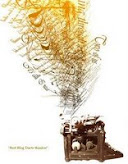Wood was born in 1891 in Iowa. His father was a farmer and his mother was a teacher. After high school, he moved to Minnesota to learn how to work with wood and metal.
The next year, Wood decided to become a teacher. He studied for his teaching certificate at the University of Iowa. He also studied architecture and he painted.
In 1916, Wood went to the Art Institute of Chicago to study art.
He never finished any of his studies, but in 1919 he earned his teaching credentials by teaching in a school in Iowa. He taught middle school and high school art for 6 years and traveled to Europe during the summers. During these trips, Wood studied many European artists. It was during his travels that Wood learned to paint the ordinary as something special.
Wood set up his own studio in Iowa and began painting scenes of the American Midwest. He taught art classes at his studio. He also supported other local artists, musicians, and actors. He even let a local acting group put on performances in his studio.
Wood left his studio and began teaching art at the University of Iowa. Even though Grant Wood was a famous and well-liked artist at the time, many other teachers at the University of Iowa were upset that he hadn’t finished his own college education.
Grant eventually left the University of Iowa. He found a new studio and painted until his death in 1942.
Check out the Iowa state quarter that came out in 2004. Though Grant Wood had been dead for 62 years when the quarter was released, Iowa decided to use one of his designs on the back.
If you want to click through a lot of Grant Wood's art, check out this site which includes 74 of his paintings Notice how they look just a little too simple to be real. It’s almost like a dream version of the American Midwest.
Return to main page.
________________
My Current NaNoWriMo Word Count:








2 comments:
I knew of course American Gothic, but hardly anything else of Wood's works; I went throught the complete list on your link. I'm really impressed by all his portraits and also of all the American landscapes. I really like the style (Haying, January, Spring in the Country, New Road, Young corn...). I'm much less impressed by his European paintings. Surprising to see the difference in styles.
I guess he just had to figure out what worked for him and what didn't. I definitely agree with you. He reminds of Pieter Bruegel the Elder. The colors are similar and their works seem almost-realistic in the same ways.
Post a Comment